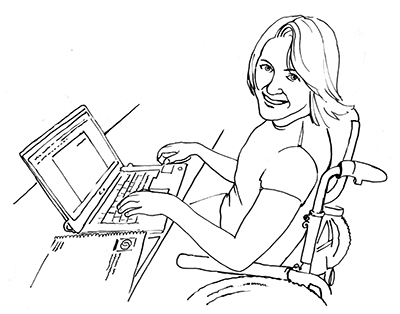Guidelines for Cyberlearning Researchers

As a wide range of digital technologies become more abundant in formal and informal learning (i.e., cyberlearning), the need to make existing and future technological innovations available to people with disabilities is critical. Incorporating universal design (UD) and accessibility into cyberlearning research and practice requires a paradigm shift from design for typical students to design for all students. The goal is simple: all cyberlearning opportunities should be accessible to, usable by, and inclusive of everyone, including instructors and students with disabilities.
Listed below are examples of ways that issues related to disability and accessibility can be addressed throughout a research project investigating the design and/or efficacy of a cyberlearning technology or teaching strategy. These guidelines resulted from the work of AccessCyberlearning 2.0 staff and collaborators who engaged in a capacity building institute (CBI) in 2019 and continued communication online. Consult online for proceedings from this meeting.
For a comprehensive document about the accessibility of current and future cyberlearning technology and pedagogy, consult Accessible Cyberlearning: A Community Report of the Current State and Recommendations for the Future.
Recommendations for Immediate Actions
Immediately, cyberlearning researchers should
- become familiar with the UD, UDL, and WCAG principles and established guidelines and practices they support as they apply to the design of inclusive cyberlearning tools and pedagogy;
- explore how cyberlearning practices supported by the science of learning can be overlaid with UDL, UDL, and WCAG principles to make them inclusive of individuals with disabilities;
- invite someone with IT accessibility knowledge to be a member of their research teams;
- ensure project staff are trained on basic accessibility principles and standards-compliant coding practices;
- establish internal policies and guidelines for accessibility within their projects, and, if relevant, their departments or institution;
- consider a broad range of learning styles and disability types during the earliest phases of conceiving and designing a project;
- analyze the experiences of participants with different types of disabilities along with other demographic groups when reporting research results; and
- when reporting limitations of their studies, include accessibility limitations.
Recommendations for Future Actions
In the future–both in near-term (i.e., 1-3 years) and longer term (3-5 years) timeframes–cyberlearning researchers should develop and promote practices related to the following suggestions that fully embrace disability-related considerations into their research workflows. They should
- implement an agile, iterative design process that involves users with a wide variety of disabilities and other human characteristics in all phases of the research and design process;
- actively participate in collaboration and communication among academia and industry on issues pertaining to the accessible design of cyberlearning;
- contribute to the development and sharing of guidelines for accessible design of cyberlearning tools and pedagogy;
- avoid being deterred by cost. Low-cost interventions can provide great benefits to users. On the other hand, early designs of innovative technologies may be quite expensive, but long term, if widely adopted and/or if adjustments are made to the design, the cost per user can drop significantly;
- articulate the broad characteristics of potential users in the design of a tool or pedagogy being developed or studied, and specify how the characteristics of various groups of individuals with disabilities will be addressed in the research design;
- resist generalizing all people who share a specific disability when designing technology to improve access for a population—for example, designing something to improve access for people who are blind should consider that not all people who identify as “blind” have the same vision capabilities or personal preferences for learning. Technology design should allow the user to customize their experience;
- if instructor guidelines will be created as part of the study, share information about accessibility issues for students with disabilities, including how some activities/products developed in the project may not be accessible to certain groups (e.g., students who are blind) along with suggested accommodations that might be provided (e.g., working with a sighted person); and
- integrate accessibility recommendations into existing project management practices to keep them on the forefront, rather than being an afterthought. Doing so will allow accessibility to be addressed as an integrated part of the project.
Acknowledgments
DO-IT (Disabilities, Opportunities, Internetworking, and Technology) serves to increase the successful participation of individuals with disabilities in postsecondary education and careers. Funding for DO-IT’s AccessCyberlearning 2.0 project comes from the NSF as part of the Cyberlearning and Future Learning Technologies program of the Division of Information & Intelligent Systems (Grant #DRL 1824540). Any questions, findings, and conclusions or recommendations expressed in this publication are those of the author and do not necessarily reflect the views of the NSF.
Copyright © 2019 University of Washington. Permission is granted to copy these materials for educational, noncommercial purposes provided the source is acknowledged.